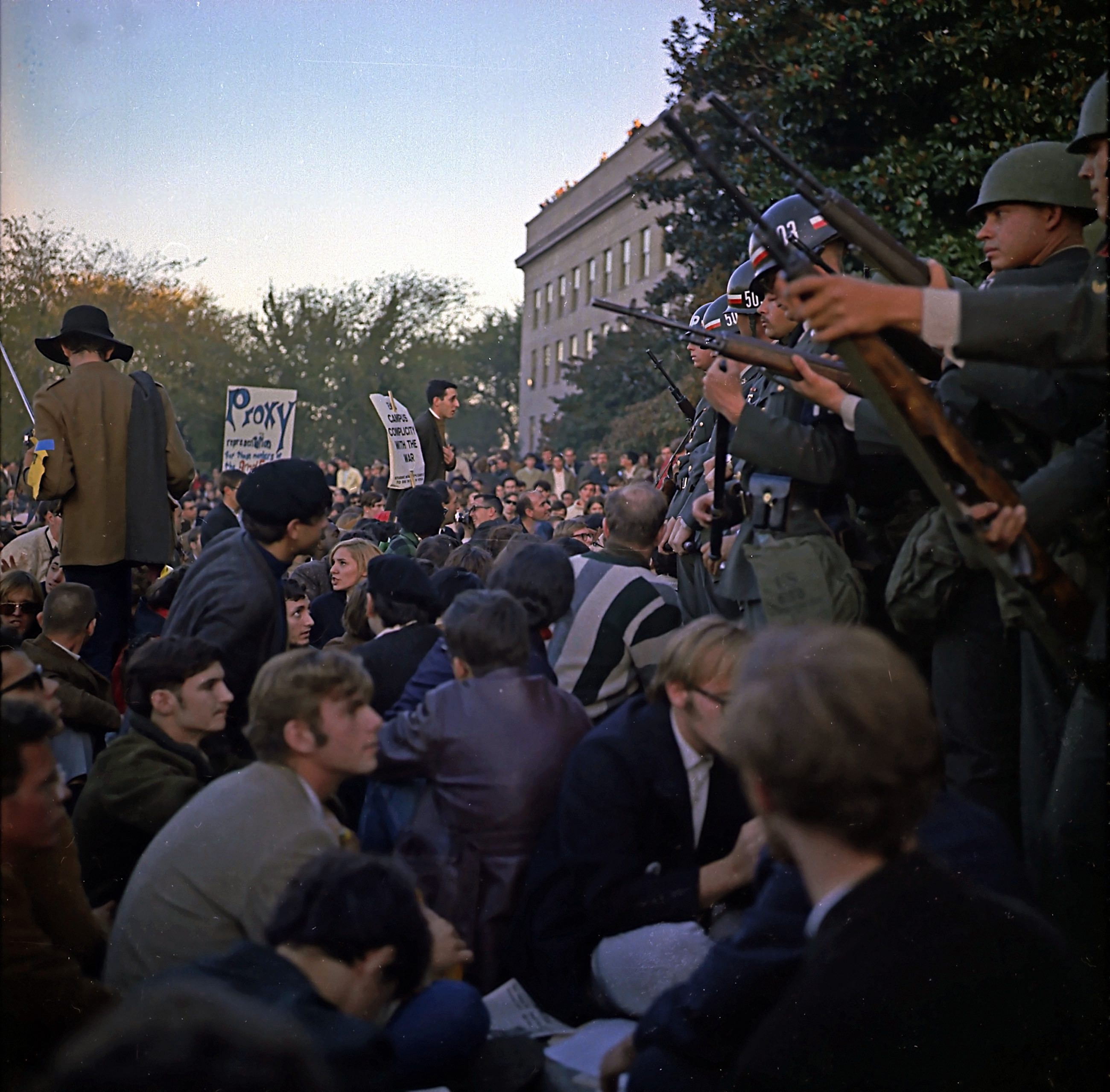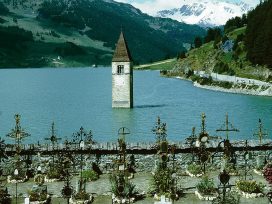French intellectuals of a certain age tend to divide their lives into two parts – ‘before May’ and ‘after May’. Philosopher Jacques Rancière defined May 1968 as a political moment which ‘signals the very essence of politics.’ Twenty years later, Jacques Capdeveille and René Mouriaux saw these ‘events’ as ‘L’entre-deux de la modernité.’
But what does 1968 mean? Zhou Enlai, when he was asked a few years after 1968 about the French Revolution, mistakenly thought was he was being queried about 1968, and responded: ‘It is too soon to tell!’ Observers continue to puzzle over it: three decades later, an American author, Kristin Ross, threw up her hands, writing that ‘Un discours a été produit, certes, mais avec pour conséquence de liquider (pour reprendre une formule de l’époque), d’effacer ou, au mieux, de brouiller l’histoire de Mai 68.’
Americans have a mixed memory of 1968 but that year retains a certain magic in this country: search for ‘1968’ in Google and you will find over 40 million links. The year began with the assassinations of Robert Kennedy and Martin Luther King, leading to widespread race riots, followed by the clash between anti-war protesters and the Chicago police at the Democratic party convention. Those events, and the war over which the 1968 presidential election was fought, split that party, leading to the election of Richard Nixon.
As for Italy, an echo of the French May remains here too. Though contestation began the year before and continued long afterward (in a 1981 article, political scientist Michele Salvati referred to Italy’s as a ‘sliding May’), many Italians still refer to militants of that period as ‘sessantottini.’ Google.it produces only 264,000 results for 1968 in Italy – far less than in France or the United States – but ‘il sesssantotto’ remains a vivid memory for the generation that came of age in the 1960s. The year was marked by the notorious ‘battaglia di Valle Giulia’ in Rome in March, when the police drove into an assembly of protesting students, and by highly visible student protests in Pisa, Milan and Trento.
In all three countries, each decade since 1968 has produced mountains of books claiming to decipher its meaning. But these works tell us more about the political and cultural conditions at the time of writing than about the year being commemorated. It is only by looking at how the ‘seed’ that was planted by 1968 grew that we can judge whether that year constituted a true historical turning point, or was merely a shock whose influence declined soon afterwards. Using the metaphor suggested by the title of this article: when a ‘seed’ is planted by a political shock, its ‘harvest’ may be either rich or poor. Much depends on the nature of the soil in which it is planted, on the climatic conditions during which it grows, and by its cultivation within the country’s institutions.
As in 1848, France set the terms for the memory of 1968. Not only were the events that paralyzed the country concentrated into a few weeks; they spread like wildfire across the territory, investing social and professional groups who are seldom seen in the streets as well as ‘the usual suspects’ of students and workers. May paralyzed the French economy; it produced a major improvement in the wages of lower-paid workers and to a major university reform; it led the towering founder of the Fifth Republic, Charles de Gaulle, to seek the support of the army; and it was largely responsible for his resignation the following year, following an ill-judged referendum that he lost.
But the intensity of a shock does not automatically translate into a long-term historical turning point. True, under the pressure of the May movement, the French unions forced the government to increase the minimum wage. In the universities, where the revolt began, a reform of higher education was passed in the following academic year. 1968 also triggered the evolution of the Section Française de L’Internationale Ouvrière into today’s Parti Socialiste. But amid the general ebullience, many of the students who filled the streets in May went off on vacation with their families in the summer and the French Communist Party remained a solid outpost of Stalinism under its Jacobin exterior.
After May, social and educational policy gains were reduced. As Salvati showed, in the autumn the gains that had been made by lower-paid workers in May were reversed by a swift economic manoeuvre. As for the much-trumpeted university reform, it was whittled down in the winter of 1968-69 by a conservative majority in parliament which followed the lead of the professorate. In politics, it took thirteen more years for a reformist government under François Mitterrand to come to power. In the terms of the title of this article: the seeds planted in May did not produce a harvest equivalent to the shock of the original events.
The Italian cycle of contestation began sooner and lasted longer, as Salvati’s metaphor suggests. First, contestation began in this country well before May 1968, with the ‘little journals’ of the early 1960s and the student occupations of 1967. That movement was quickly outpaced by a workers’ movement, which peaked not in 1968 but in the ‘Hot Autumn’ of the following year. Most important, the cycle extended well into the 1970s, with the formation of a number of extra-parliamentary groups and a wave of organized violence that France escaped. Only in Germany, with a similar pre-history to Italy’s, did the radical branch of the post-1968 movement descend into armed struggle.
We can argue about whether the ‘years of lead’ in Italy were actually part of the cycle of the late 1960s or were something different, but they were accompanied by a slow, capillary transformation of the party system. Empowered by the mass entry of veterans of the student movement in the party, the Italian Communist Party advanced to control a third of the electorate by 1975, and was only prevented from entering a governing coalition by the murder of Aldo Moro at the hands of the Red Brigades. The party never entered the corridors of power, but from the late 1960s on, ‘stable instability’ became the hallmark of Italy’s party system.
Still more extended than Italy’s sessantotto was the period of contention in the United States. From the early 1960s, the United States experienced a sustained period of conflict and reform, beginning with the civil rights movement in the South, continuing with the urban uprisings of the mid-1960s in the North, and exploding into the movement against the Vietnam war in the late 1960s. As the government began its withdrawal from Vietnam, that movement declined. But in the new decade, many former civil rights and anti-war protesters gravitated into the feminist, the environmental, and a spectrum of other movements. At the same time, and inspired by the successes of the black movement, ‘spin-off’ movements arose among Latinos and Native Americans, the gay and lesbian movement began to stir, and a new wave of non-profit groups became major players in American politics.

Military police and anti-war protesters during a sit-in at the Pentagon, 1967. Source: Wikimedia Commons
Consider the feminist movement that grew out of 1968. In France the movement rapidly divided into Marxist, feminist, ecological and psychoanalytic tendencies and had little purchase at the base of society. There were conflicts among liberal, Marxist and lesbian feminists in America too, but the American movement gave rise to a range of public interest groups that had a profound influence on public policy during the 1970s and 1980s and came close to passing a constitutional amendment giving constitutional status to the rights of women. That movement helped to produce a countermovement of conservative and religious women who became key actors in the new conservatism of the Republican Party.
In both Italy and the United States, there were reforms that transformed the political economy and institutional politics. The reform of industrial relations in 1969 was the most portentous institutional reform in Italy: it challenged the unbridled power of management in the factories and helped to transform the union movement. In the United States, after the debacle of the 1968 elections, intra-party reforms like the direct primary increased the power of grassroots voters and shifted the Democratic Party’s core to African-Americans and other minorities. In turn, that led to parallel reforms in the Republican Party which empowered conservative forces in the ‘sunbelt’ and laid the foundations for the profound shift of that party’s identity that is still with us today.
In both Italy and America, the decades since 1968 witnessed an explosive growth of civil society groups, which Roberto Borcio and Tommaso Vitale regard as ‘a school of democracy’. In both countries, social participation has taken new and inventive forms (think of the growth of the volontariato in Italy and of digital activism and the vast movement of resistance to Trump in America). Not all of these developments are positive (think of the ‘alt-right’ and the authoritarian tendencies in the Trump movement), but their origins in seeds that were planted fifty years ago are beyond doubt.
How can we explain these differences between France, where the ‘seed’ of 1968 was first planted, and Italy and the United States, where it produced a richer – if more contested – harvest?
One difference worth noting is that while the French May rapidly rose to the national level, contestation in Italy and the United States was more decentralized and was thus more difficult to repress. While the Italian police were quick to aim their vehicles at protesting students and the FBI worked hard to infiltrate and undermine leftwing organizations, neither country’s forces of order possessed the repressive mechanisms or the intelligence capacity of the French police.
A second difference was that the major institutional bulwark of the French left – the Parti communiste français – was a hidebound bureaucratic machine that was still in thrall to its masters in Moscow. Its leaders reacted violently to any movement to its left and looked down at the fils de papa who filled the streets in May. The PCI, in contrast, was a less centralized organization by 1968 and was more open to co-opting autonomous currents of progressive opinion.
A third difference was the most important: the greater power and concentration of the French state. Battered by two decades of neoliberalism, French étatisme has been sharply reduced, but in its Gaullist incarnation, it was alive and well, and repulsed the reformist drives emerging from May. The Italian state, because of its amorphous quality, and America, because of the decentralization of its federal system, were more susceptible to the autonomous influences of civil society that arose in the 1960s.
The burden of this article is not to cast doubt on the profound impact of May 1968 on the memory and the legacy of that year. But in France, where the shock of 1968 was greatest, the conditions for its gestation were poor, while in the United States and – for different reasons – in Italy, it had a longer and more portentous history. If nothing else, the fact that we still put France at the core of the memory of that year tells us that it had a profound transnational influence. My claim is more modest: it is to argue that the explosive quality of a cycle of protest does not automatically translate into a longer season of political change. The season of planting is not the same as the season of harvest. This harvest has been richer and more varied in Italy and the United States than in France, where the seeds of May 1968 were first planted.







